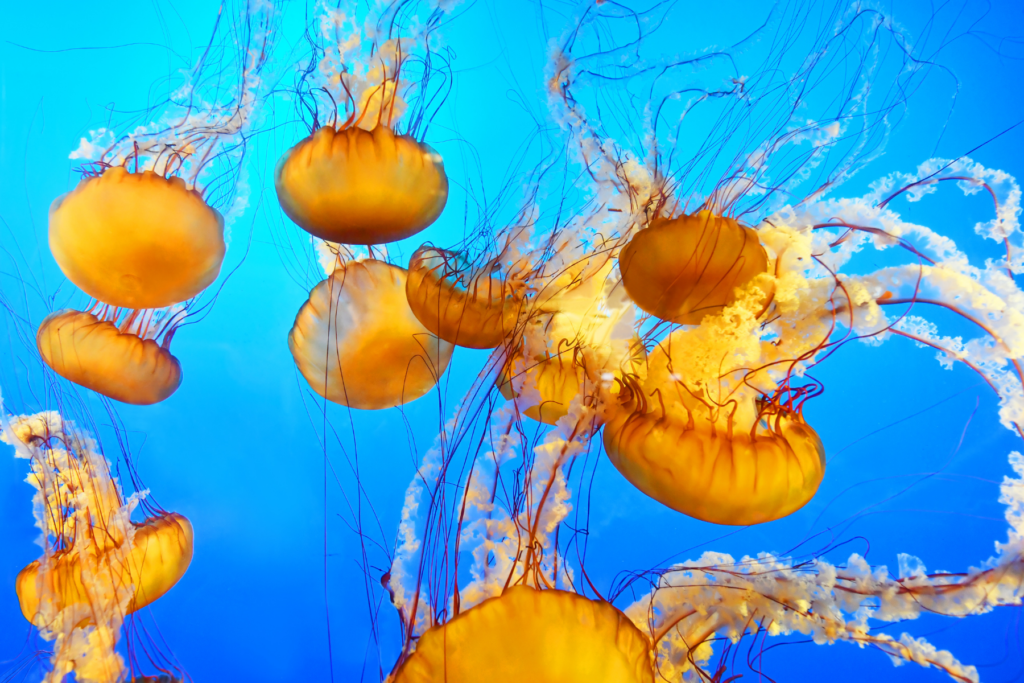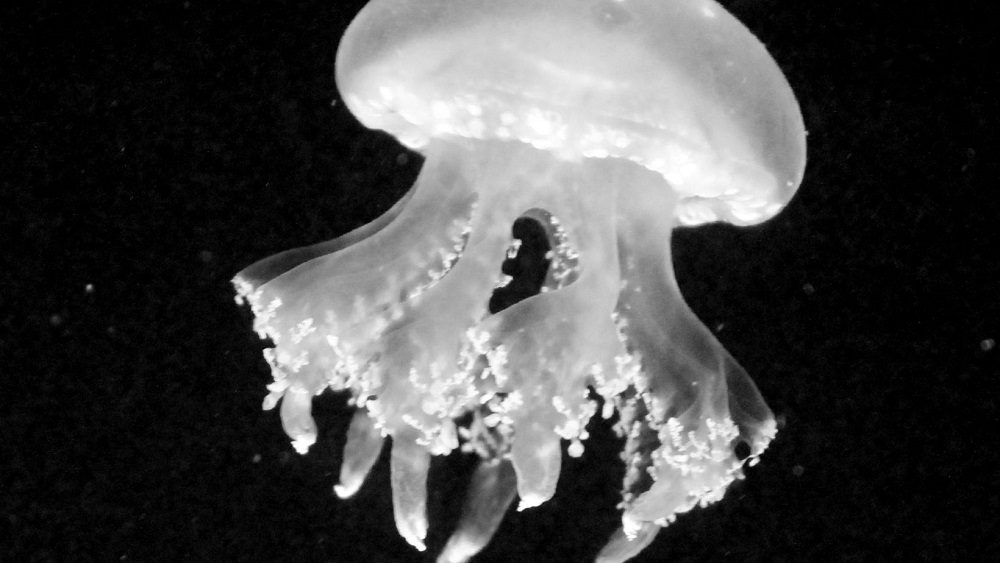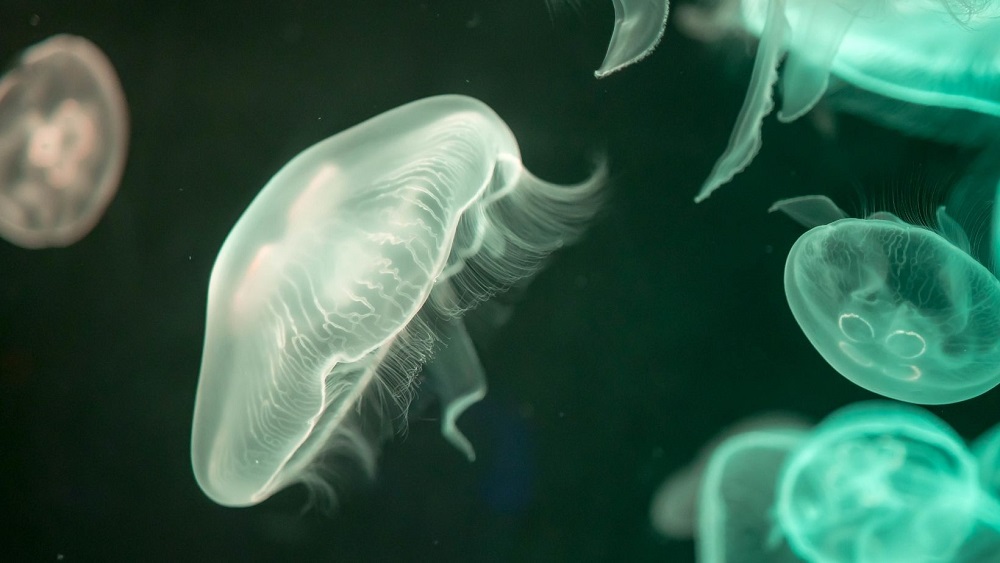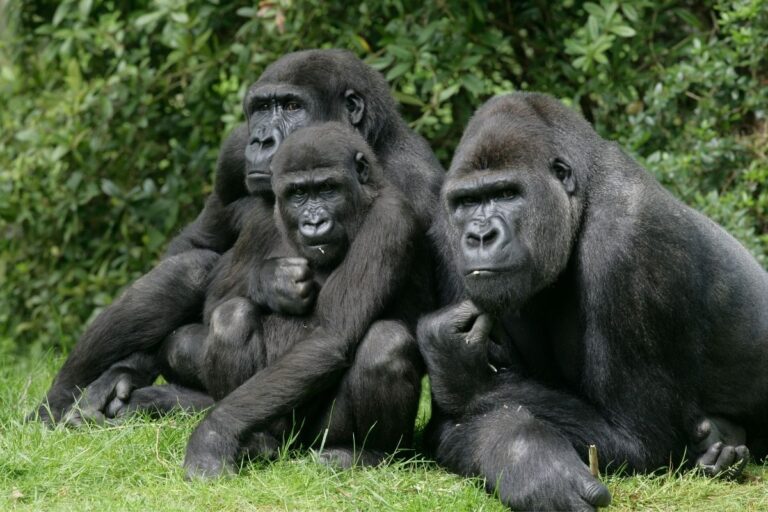Interesting Animal Facts About Jellyfish
Last Updated on November 10, 2021 by
Jellyfish are among the most terrifying and interesting organisms in the ocean, so it’s no surprise that both children and adults are fascinated by them. They’re also incredibly diverse: the phylum Cnidaria, which contains over 10,000 species, encompasses the majority of jellyfish.
There’s probably a lot about jellyfish that you weren’t aware of. For instance, did you know that jellyfish lack vital organs? That’s right.
This means that they live without a heart and a brain, but still manage to float about and carry on their business – suggesting that they have more in common with politicians than they do with other marine life.
Sit back, relax, and take a few minutes to enjoy these fascinating jellyfish facts. What you don’t know about these strangely fascinating gelatinous creatures is sure to surprise you – It’s a no-brainer.

Top Jellyfish Facts
They Are 98% Water
Jellyfish appear to blend in with their surroundings, gradually pulsing with the water’s currents, and for a very important reason – their bodies are made up of up to 98 percent water.
Whenever jellyfish wash up on the beach, their carcasses evaporate into the air and they can sometimes seem to completely vanish into thin air in just a matter of hours.
They also have a primitive neurological system and a “nerve net,” which is essentially just a continuous web of nerves situated in the epidermis, but no brain per say.
Not just that, but they lack blood, skeletons, and a heart. They do, though, contain a primitive neurological system that includes receptors that absorb sunlight, movements, and substances in the water.
Jellyfish can rotate and move in the water thanks to these talents, as well as their sense of gravity. Structure proteins, tendons, and nerve cells make up around 5% of jellyfish bodies, with water accounting for the remaining 95%. Human bodies, on the other hand, contain up to 60% water.
Some Jellyfish Can Kill Humans
The box jellyfish, according to National Geographic, is among the most evolved creatures in the water. Box jellyfish, unlike most of its jellyfish relatives, have fully functioning eyes complete with a cornea, pupil, lenses, and retinas. They lack a brain and central nervous system, though.
Rather than meandering with the flow like most jellyfish, box jellyfish may accelerate themselves through the ocean at rates of up to 4 knots.
The scariest jellyfish are box jellies. A box jelly, according to researchers at SeaWorld, has enough poison to kill 60 humans. When individuals are stung, they frequently suffer from cardiac arrest or drown as a result of trauma before receiving medical attention.
The discomfort from a box jellyfish sting might endure for weeks if they recover. As a result, it’s always best to avoid box jellies.
They Can Grow Much Bigger Than You Think
The Lion’s Mane Jellyfish is the world’s biggest known jellyfish, with some people comparing their size to that of a blue whale. While this may be somewhat hyperbolic, back in 1865, off the shores of Massachusetts, the nation’s biggest Lion’s Mane specimen was discovered.
The tentacles on this jellyfish measured in at 120 feet long and measured around 7 feet in diameter, much larger than you may expect.
The length of lion’s mane jellyfish fluctuates depending on location, with northernmost species growing up to 7 feet in length and southern ones reaching 20 inches. The Arctic Ocean, northern Atlantic, north Pacific, English Channel, and Irish Sea are all good places to look for these jellyfish.
The stings of lion’s mane jellyfish are not typically lethal, despite their imposing size.
They Have Multiple Collective Nouns

Creatures in groups usually have their own names: A group of sheep, for example, is known as a flock, whereas a group of crows flying around together is known as a murder. There are 3 distinct names for jellyfish groupings. A “bloom,” “smack,” or “swarm” are all correct terms to use when describing a group of jellyfish.
Bloom is a term that refers to a huge gathering of jellyfish congregating in a limited region, but it can also apply to cyclical surges or quantities that are higher than expected. A smack is yet another name for a bunch of jellyfish, though it is not widely used by academics who research jellyfish.
Jellyfish are “bloomy” by design of their lifespans, since they are created by their benthic polyps in the springtime when sunlight and plankton levels rise, therefore they arrive abruptly and in enormous numbers, even in a balanced ecosystem.
When the term “swarm” is used, it usually indicates that the group has some form of proactive desire to stay together.
Some Jellyfish Are Considered Immortal
Have you ever fantasised about being able to live forever? The fact of the matter is that you have the ability to become immortal. But the real kicker is that you’ll have to transform into an underwater jelly blob in order to do so.
Believe it or not, there’s a death-defying jelly called the eternal jellyfish (or Turritopsis dohrnii) that may be spotted in the Mediterranean Sea and Japanese waters. When this specific type of jellyfish dies, It settles to the water’s depths and starts to decompose.
But amazingly, Its cells then regenerate themselves, but not into a second medusa, but also into polyps, from which new jellyfish arise. The jellyfish has returned to a previous stage of life to start over.
Jellyfish Have Been To Space
Jellyfish are native planet Earth, despite their extraterrestrial appearance. They have, however, travelled to the farthest reaches of the universe. In the early 1990s, NASA began sending jellyfish to space on the Columbia spaceship to see how they would handle a zero-gravity atmosphere.
They did this because humans and jellyfish, curiously, both position themselves via specialised gravity-sensitive calcite crystals. (In people, these crystals are found within the eardrum, and in jellies, they are found around the bottom border of the mushroom-like shells.)
As a result, understanding how jellyfish cope in space can provide insight into how humans might perform.
They’re Older Than Dinosaurs
Because jellyfish lack bones, fossils are few. Despite this, researchers have proof that these organisms have been swimming in the waters for at least 500 million years. In reality, the jellyfish ancestry is thought to date back 700 million years or more.
That’s about 3 times as old as the earliest dinosaurs. As a result, jellyfish are the oldest multicellular animals on the planet that we are aware of.
They’re Thriving, Despite Climate Change
Jellyfish, unlike many other marine animals, thrive in habitats that have been affected by ocean rising temperatures, acidification, fishing, and other anthropogenic factors, according to a 2019 assessment on the oceans from the United Nations Intergovernmental Panel on Climate Change.
They have become much more at ease as a result of human activity. Jellyfish, unlike corals, crabs, and other marine animals that create shells, aren’t as vulnerable to acidification as other marine organisms. That doesn’t mean they’re invincible, but it does imply they’re doing better.
You Can Eat Some Jellyfish
Jellyfish are edible and are consumed as a luxury in some areas, such as Japan and Korea, where you can find them on many menu boards. In addition, jellyfish have been turned into confectionery in Japan.
Students created a sweet and savoury caramel consisting of sugar, starch sauce, and jellyfish flour in order to try and make use of the jellyfish that frequent the area’s seas.
You Can Swim With Some Jellyfish

Ongeim’l Tketau Jellyfish Lake is a saltwater body of water in the small South Pacific republic of Palau. It’s packed with jellyfish, as the term suggests.
The sting of these colorful jellyfish, which were stranded in the lake by shrinking glaciers 12,000 years ago, has evolved to the point where it no longer harms people. After the jellyfish number recovered,
Jellyfish Lake returned to allowing snorkelers in December 2018. In 2016, there had been a dramatic decrease in the proportion of jellies, which researchers thought was caused by droughts and the use of sunblock by tourists.
Urine Won’t Help A Jellyfish Sting
You’re probably familiar with the DIY remedy we’re referring to. Some people believe that the best approach to take if struck by a jellyfish is to pee on the sting. Not only would that be an odd seaside activity, but it’s also unproductive, according to the Mayo Clinic.
It’s the same with meat tenderizer, lemon zest, or liquor. It’s important to remember that these are merely old wives tales, and if you’re stung, you should seek urgent professional attention and medical advice.
You Can Treat A Jellyfish Sting With Vinegar, Though
If any portions of the jellyfish are still stuck to your body, washing with vinegar helps avoid poison from being discharged, according to The Guardian. A spritz container of vinegar is kept on standby at some locations and snorkel vessels just in case.
If vinegar isn’t available, wash the injured region with saltwater and detach the tentacles, which will keep stinging as long as they’re in contact with your flesh. Bathing the wound for 20 to 45 minutes in warm water can also significantly minimize discomfort.
If you suffer difficulty breathing, rashes, or other signs of an allergic reaction or shock, seek immediate help.
Some Jellyfish Glow In The Dark
Green fluorescent protein (GFP) is a protein that is found in crystalline jellies that has significant medical uses. Researchers at Mayo Clinic have introduced a variant of GFP and a gene from a macaque monkey known to inhibit a viral disease feline AIDS into an egg cell of a cat.
The babies illuminated green in UV light when they were delivered, suggesting that the gene had been successfully transmitted. GFP was discovered by biologist Osamu Shimomura, who won the Nobel Prize in Chemistry in 2008.
Jellyfish Aren’t Actually Fish
Jellyfish, contrary to their namesake, are not a species of fish. Fish are aquatic creatures that inhale through their gills. Jellyfish, however, are invertebrates, which means they have no spine and rely on membranes to obtain nutrients from their surroundings.
They Can Reproduce Both Sexually And Asexually
Jellyfish reproduce by discharging sperm and eggs into the water, where they develop into small, free-swimming juveniles. These larvae develop into polyps that cling to flat objects and can divide into multiple baby jellyfish, allowing for asexual reproduction.
Asexual reproduction happens during this period, which could last weeks or sometimes even years. Polyps replicate rapidly and blossom, or strobilate, into ephyra, a different stage of jellyfish existence. The mature medusa jellyfish develops from this phase.







